Report: 2023 assessments of 2001 and 2002 clonal poplar trials at Parakai
Report Date: January 2024
Author: Dean Satchell
 Senior Forest Service Advisor
Senior Forest Service Advisor
Forest Service Advice
Te Uru Rākau - New Zealand Forest Service
Ministry for Primary Industries - Manatū Ahu Matua
forestserviceadvice@mpi.govt.nz
Mobile: 022 0107961
Phone: +64 9 2207864
Discussion
This wide-spaced experimental poplar clonal trial was planted at Rosaleen McCarthy's farm near Parakai, at the South Head of the Kaipara harbour, North Auckland, by HortResearch. The trees were planted as 3m poles, in two separate trials planted in 2000 and 2001.
Experimental design for each trial was completely randomised blocks (10 blocks) with each clone (ten clones altogether) represented once in each block.
The trial was last measured in 2007 and reported on in 2011. This report records measurements and observations undertaken during April 2023.
| Clone name | Clone # | Number of plants |
|---|---|---|
| Dudley | NZ 5022 | 10 |
| Otahoua | NZ 5020 | 10 |
| Weraiti | NZ 5018 | 10 |
| Selwyn | NZ 5016 | 10 |
| Shinsei | NZ 5032 | 10 |
| Mapiu | 93-005-010 | 10 |
| Geyles | 93-005-009 | 10 |
| Hororata | 93-005-007 | 10 |
| Pecam | 93-005-002 | 10 |
| Toa | NZ 5007 | 10 |
| Total | 100 | |
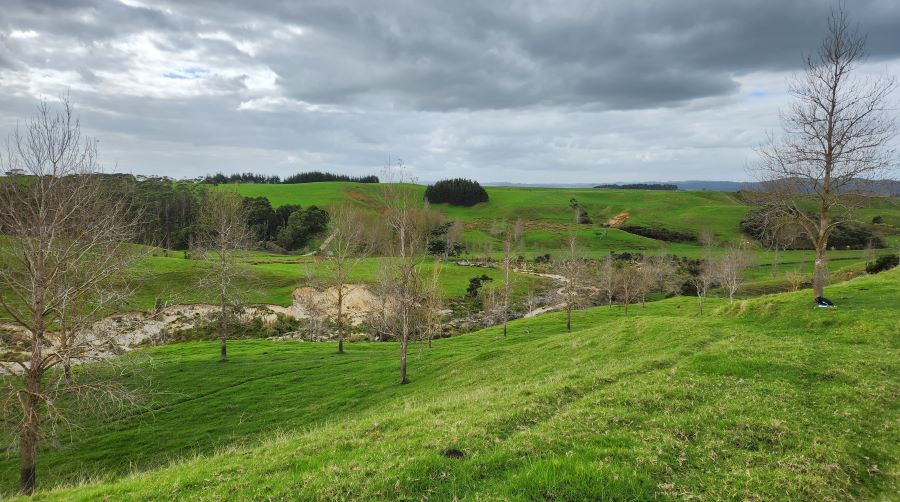
2000 trial site in 2023.
| Clone name | Clone # | Number of plants |
|---|---|---|
| Dudley | NZ 5022 | 5 |
| Otahoua | NZ 5020 | 5 |
| Weraiti | NZ 5018 | 5 |
| Selwyn | NZ 5016 | 5 |
| Shinsei | NZ 5032 | 5 |
| Mapiu | 93-005-010 | 5 |
| Geyles | 93-005-009 | 5 |
| Hororata | 93-005-007 | 5 |
| Pecam | 93-005-002 | 5 |
| Kawa | NZ 5006 | 5 |
| Total | 50 | |
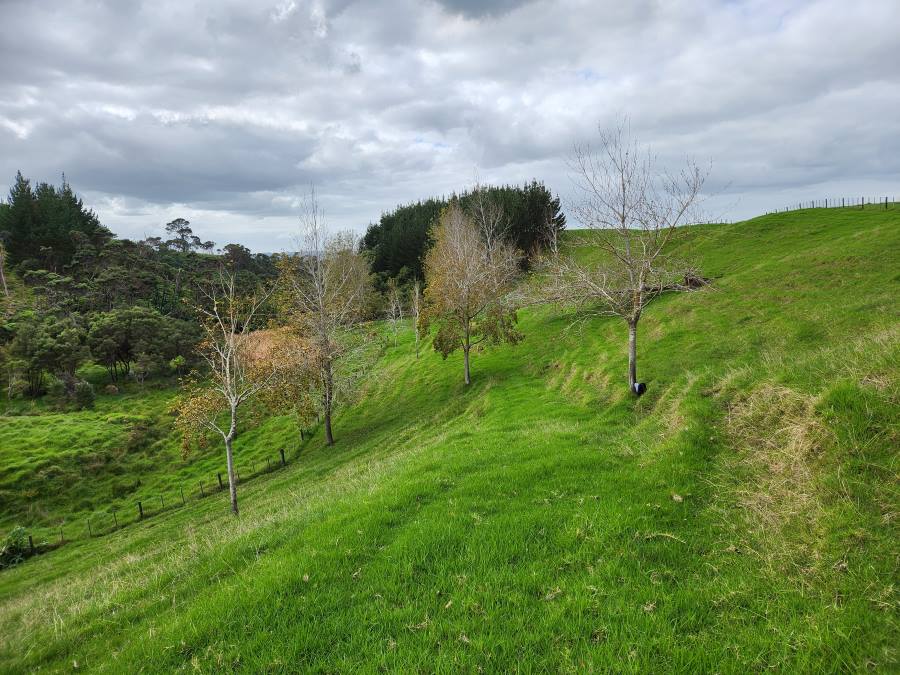
2001 trial site in 2023.
The farm
The farm experienced severe erosion caused by Cyclone Gabrielle in February 2023:
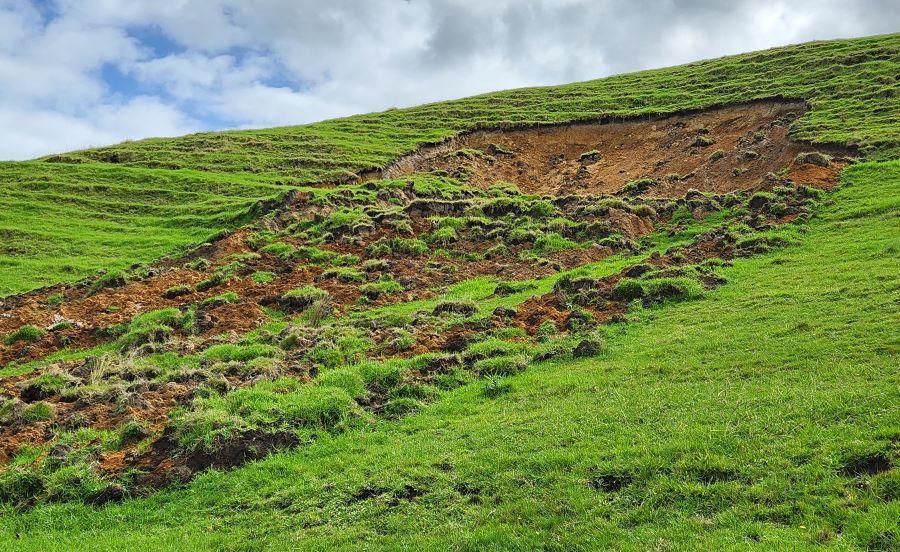
Slip erosion.
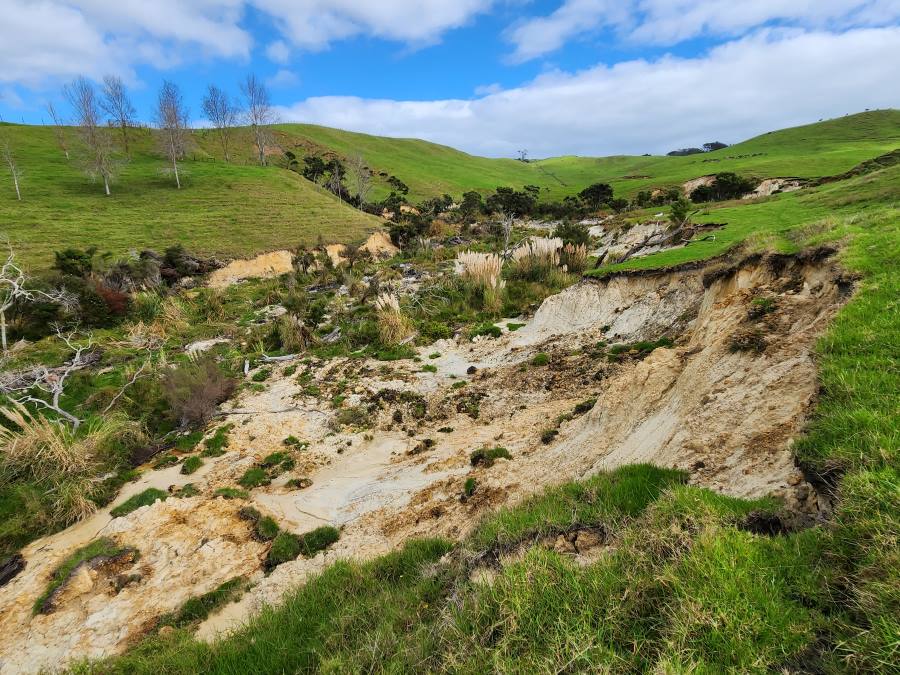
Gully erosion.
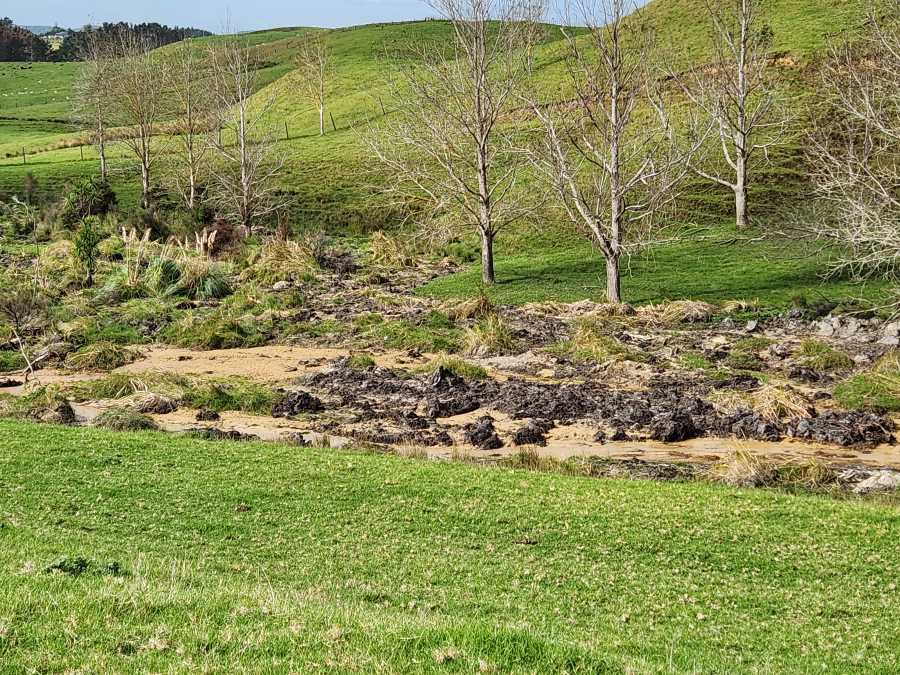
Sediment deposited in gully, with some of the 2000 trial poplars in the background.
Poplars prevent and control soil erosion and a breeding programme has been implemented in New Zealand for multiple decades to improve the planting stock available to growers.
The farm is adjacent to the West Coast and endures salt-laden wind as a result. Cyclone Gabrielle caused significant winthrow damage to trees throughout the Kaipara district from strong westerly winds. Ballinger et al. (2023) reports many areas of poplar windthrow in Northland resulting from Cyclone Gabrielle, in particular the Kawa cultivar. On this farm two mature Kawa poplars in the 2001 trial were blown over, and adjacent kanuka were also toppled by the wind:
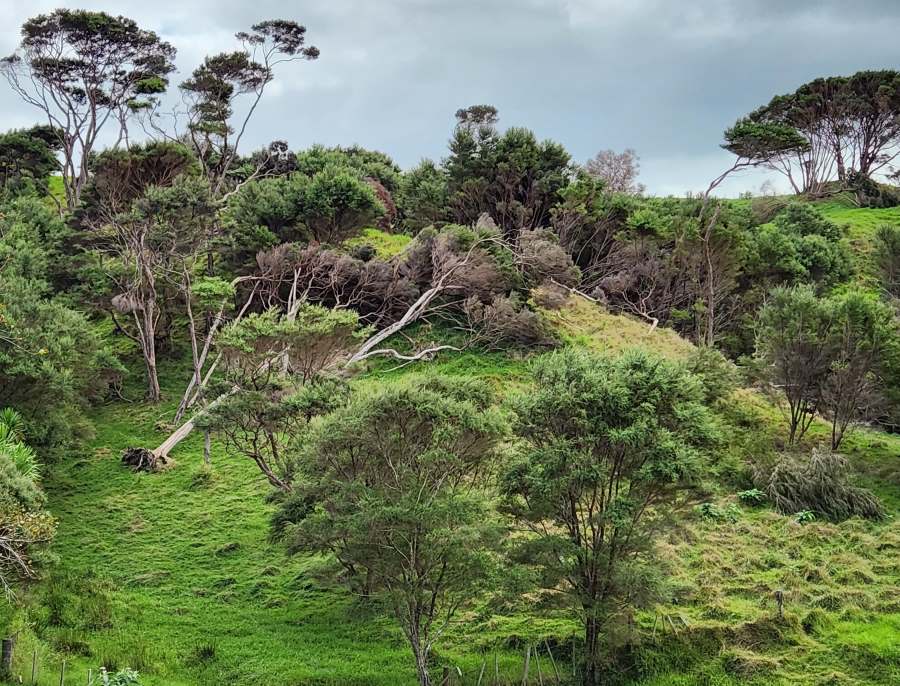
Windthrown kanuka adjacent to the 2001 poplar trial.
A small group planting of Kawa poplar that were not part of this trial. These were not harmed by Cyclone Gabrielle:

Of interest is the wild deer population present on the farm. North of Auckland, deer are only present on the South Head of the Kaipara harbour:
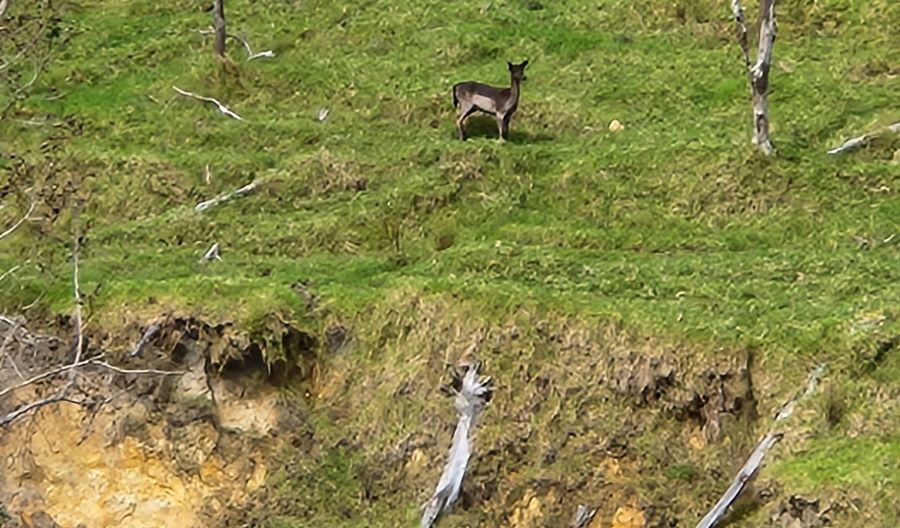
Observations
The total number of surviving trees on this site was very low, 44% for the 2000 trial and 46% for the 2001 trial. This compares with 70% survival for the 2000 trial at year 2007 and 62% survival for the 2001 trial at year 2007 (McIvor et al. 2011). The reason for the low survival is not known as no assessments have been made in the period between 2011 and 2023, but this aligns with the general consensus in Northland that pole survival tends to be quite low over time. This will likely be a combination of site conditions (how well the poles were planted, stock access during establishment, and cultivar issues). Clearly further work is required to improve establishment success for poles in Northland.
Of interest was the condition of the clones post Cyclone Gabrielle. This trial has also not been assessed for over a decade.
Kawa was by far the best looking cultivar in this trial, but suffered from windthrow. Its salt wind tolerance was surprisingly high.
Toa had good form, but variable growth and appeared to be diseased.
Otahoua was the best P. nigra x P. deltoides hybrid, for both growth and form. A tree in the most exposed site in this trial grew surprisingly well.
The maxi-nigra hybrids did not perform well at this site. It is not known whether their poor growth and form resulted from salt wind exposure, or another climatic factor unique to Northland that induces disease. Deer or cattle browsing of the smoother bark of these hybrids could also possibly explain their poor performance.
Conclusions
This site provides valuable but rare insights into poplar breeds suitable for Northland and highlights the need for further breeding and further trials to select clones well adapted to the region.
Kawa has been the clone of choice in Northland for nearly thirty years, but Cyclone Gabrielle highlighted its propensity to topple in high summer winds (i.e. when in leaf). With its Yunnan poplar (balsam) parentage, Kawa has proven to be healthy, hardy and only moderately palatable to possums.
Northland's humid subtropical climate appears to limit the clones that can be grown here. For example Weraiti performs well in Canterbury, Manawatu and Hawkes Bay (See Poplar clones), but in this trial performed poorly and became severely diseased.
Balsam poplar species offer lower palatability to possums than black poplar P. nigra and eastern cottonwood P. deltoides, an important trait for breeding cultivars suitable for Northland. Yunnan poplar P. yunnanensis, being a disease-resistant balsam poplar well suited to Northland's climate, appears to be a good choice as a parent species for future hybrid breeding programmes for Northland.
References
Ballinger J, Satchell D, Webb S. Poplar windthrow following Cyclone Gabrielle (2023), Northland Regional Council.
McIvor I, Hedderley D, Hurst S, Fung L. Survival and growth to age 8 of four Populus maximowiczii x P. nigra clones in field trials on pastoral hill slopes in six climatic zones of New Zealand (2011), Plant & Food Research.
Poplar Clones, Information sheets on poplar clones grown and marketed through Regional Council nurseries, Plant and Food Research.
The advice provided as part of our Forest Advice Service is intended to assist you in making decisions in relation to Forest activities. The advice includes information provided by you, the Ministry for Primary Industries (MPI), and information provided by third parties (providers of information). All reasonable efforts have been made to consider the relevant factors available when giving our advice. MPI does not accept any responsibility or liability for the accuracy or completeness of your or third-party information and has relied on the accuracy and completeness of the information that you and third parties have provided in giving this advice. MPI accepts no liability for direct, indirect or consequential losses from use of this report whether in contract, tort (including negligence), or equity. MPI does not provide financial, accounting, tax, legal, or real estate advice as part of its Forest Advice Service and our advice should not be construed as such. You should take specific advice from qualified professionals, as appropriate, before making your decisions and taking any action.

 Farm Forestry New Zealand
Farm Forestry New Zealand